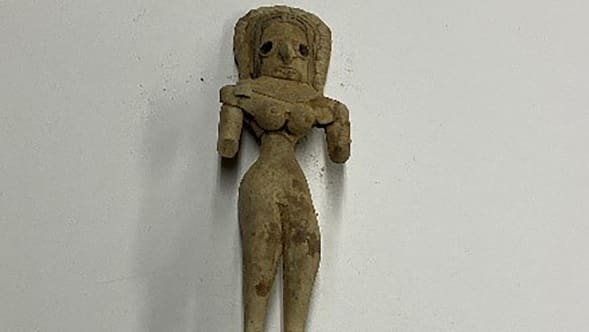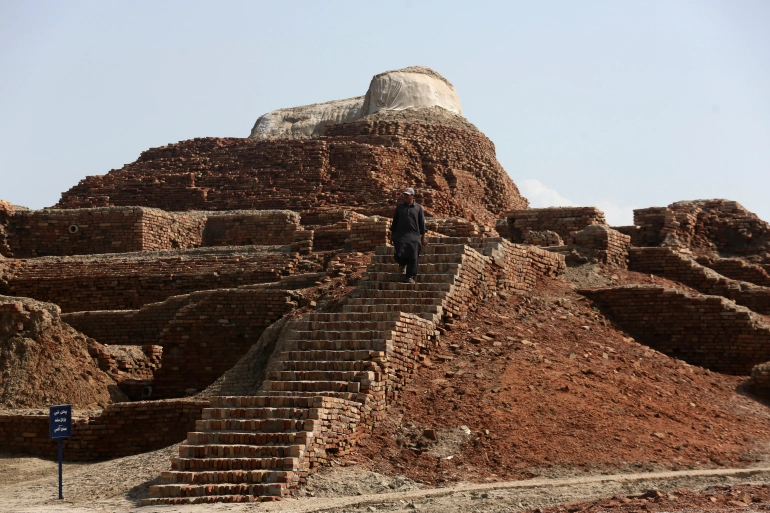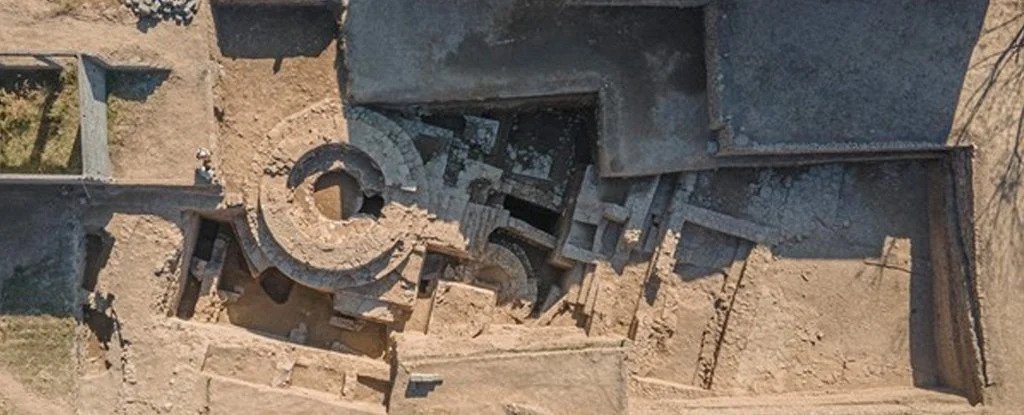Archaeologists unearthed a pot of copper coins in first major discovery at Mohenjo Daro in Pakistan, in 93 years

A pot full of copper coins was discovered from a stupa (a dome-shaped building erected as a Buddhist shrine) at the UNESCO World Heritage Site of Mohenjo Daro during conservation work in Pakistan’s Sindh province.
Mohenjo Daro, or “Mound of the Dead” is an ancient Indus Valley Civilization city that flourished between 2600 and 1900 BCE. The ruins of the huge city of Moenjodaro – built entirely of unbaked brick lie in the Indus Valley. The site was discovered in the 1920s.
The Archaeological Ruins at Moenjodaro are the best preserved urban settlement in South Asia. The acropolis, set on high embankments, the ramparts, and the lower town, which is laid out according to strict rules, provide evidence of an early system of town planning.
Experts evaluated the discovery of the pot filled with copper coins as the first significant artifact discovery in 5,000-year-old city ruins after 93 years.
Director of Archaeology Mohenjodaro, Dr Syed Shakir Shah, who led the team comprising archaeological conservator Ghulam Shabir Joyo, had confirmed that the staff busy with preservation work had stumbled upon the pot of coins on Wednesday.
Shah said laborers recovered the pot of coins during excavation but buried it again. Later some of them informed the officials of the archives department who then dug them out.
The team continued the work for three hours and safely secured the coins buried in the debris along with the jar wherein they were kept. Officials said the jar of coins weighing about five and a half kilograms was later shifted to the soil testing laboratory at the site.

Sheikh Javed Sindhi, who was engaged in research at the site, said that previously, 4,348 copper coins were excavated by R.D. Banerji, Sir John Marshall, and Mackay from 1922 to 1931. These coins belonged to the Kushan Period dating back to the 2 to 5 Century AD, he said. “The present discovery is remarkable after 93 years and its credit goes to the Mohenjodaro team,” he said.
Shakir Shah told journalists later that most probably the coins belonged to the Kushan Period.
“Though we have shifted the coins to the laboratory [for the time being] we will definitely hire experts to confirm the period which could be revealed from the inscriptions on the coins. We have to look for which dynasties of the Kushan Period the coins belong to,” he said.
Rustam Bhutto, in-charge of the soil and water testing laboratory, said the treatment process for separating the amalgamated coins would take at least a month to make the figures and language on coins visible.
Ali Haidar Gadhi, senior conservationist at said that Mr Banerji discovered nearly 2,000 coins, 338 of which were of the period of Kushan ruler Vasudeva-1 with standing royal figure on obverse and Shiva on the reverse and the bulk comprising 1,823 un-inscribed cast copper coins. “Another nine had fire altar on the obverse and a crude figure on reverse,” he said.

“Although subsequent investigations suggest a break between the end of the Indus occupation and the Kushan phase, it is unlikely that the site was ever totally abandoned due to its high position and the protection it afforded against floods,” he said.
The Kushans existed from around the 1st century CE to the 3rd century CE and played a significant role in connecting various regions through trade, diplomacy, and cultural exchange.
The first Kushan ruler was Kujula Kadphises, who may be identified with the Yabgu of Guishuang named Qiu Jiuque in Hou Han shu. Numismatic evidence shows that Kujula Kadphises continued to imitate posthumous types of coinage of the last Indo-Greek ruler in central Afghanistan.
Other copper coins issued by Kujula Kadphises copy the royal portrait on the obverse from gold coins of the Roman emperor Augustus (31 BCE – 14 CE). The image of the seated Roman emperor is transformed into a Kushan ruler, who is identified as Kujula Kadphises in Greek and Kharosthi legends. As the Kushans progressed further into northwestern India, Kujula Kadphises adopted the title “Great King, King of Kings” on coins patterned on those of Saka and Parthian rulers.
While evidence from coins and inscriptions at Rabatak and Surkh Kotal clearly shows that the Kushans maintained Iranian religious beliefs and practices, other inscriptions show that Kushan officials under Kaniska and his successors patronized Buddhists. The fire altar on previously discovered coins has Iranian influences.

























